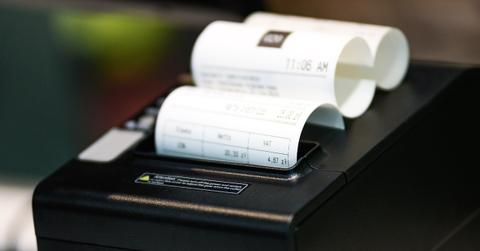What Is Sales Tax and Where Does It Go?
Sales tax is a form of indirect tax. Who levies sales tax and what does sales tax go to?
Nov. 3 2020, Updated 11:38 p.m. ET

Globally, governments rely on taxes and borrowings to fund their spending. Taxes are mainly divided into direct and indirect taxes. Sales tax is a form of indirect tax. Sales tax can be charged by national, state, or local governments.
What are the benefits of sales tax?
Sales tax is a form of indirect tax and is based on consumption and not income. It's relatively easier to evade direct taxes like income tax. However, it's tough to evade sales tax since it's charged at the point of sale. Sales tax is also simple and consumers don't need to maintain a record. In contrast, income tax has to be filed annually.
Sales tax helps governments increase their tax base. While not every citizen in a country pays income tax, the sales tax is paid by everyone irrespective of income. Governments can also use sales tax to discourage sales of sin goods like tobacco products by imposing a higher levy. At times, governments announce a sales tax holiday to spur consumption. Sales tax also helps governments raise revenues to meet their expenditure.
Where does sales tax go?
Sales tax goes to the authority that levies the sales tax. There isn't a national sales tax in the U.S. States and local governments impose a sales tax. Sales tax can either be origin-based or destination-based.
In an origin-based sales tax, the tax rate is based on the location of the seller and the tax would go to the governments in the state where the seller is based. However, in a destination-based sales tax, the applicable tax rate would be for the state where the buyer is based. The tax would also go to the state authorities where the buyer is based.
Five U.S. states—Alaska, Oregon, Montana, Delaware, and New Hampshire—don’t have a general state sales tax. Arizona, California, Mississippi, Illinois, New Mexico, Ohio, Missouri, Virginia, Texas, Utah, Tennessee, and Pennsylvania have an origin-based sales tax, while the remaining states have a destination-based sales tax. California is actually a hybrid model where district tax is based on destination. However, state, county, and city sales tax are origin-based.
How is the amount of sales tax determined?
The sales tax is determined based on the purchase of goods or services and the applicable tax rate. The tax rate is the total of the state tax and the local government tax. It's collected by the seller and is a pass-through tax, which means that the seller collects the sales tax on your behalf and then pays the relevant authorities. For direct taxes, individuals are responsible for depositing the tax.
Which states have the highest and lowest sales tax?
According to the Tax Foundation, Alaska has the lowest average sales tax of 1.76 percent followed by Hawaii at 4.44 percent and Wyoming at 5.34 percent. Wisconsin and Maine have the fourth and fifth-lowest average sales tax rate.
Tennessee has the highest average sales tax rate of 9.55 percent followed by Arkansas at 9.53 percent. Louisiana, Washington, and Alabama have the third, fourth, and fifth-highest average sales tax rate at 9.52 percent, 9.23 percent, and 9.22 percent, respectively.

